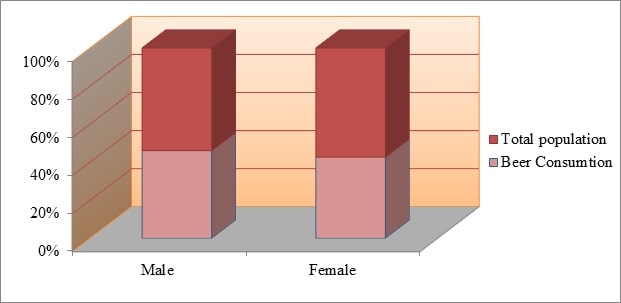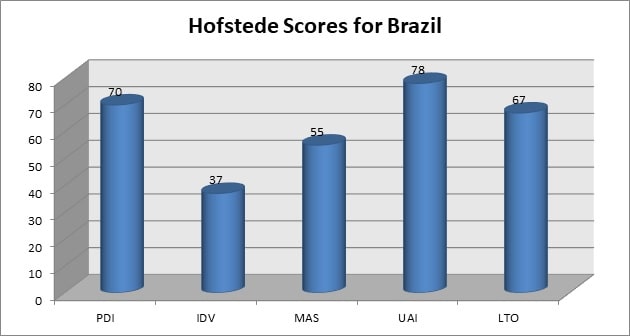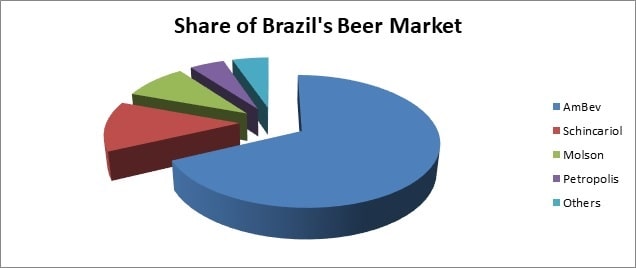Global Marketing Communication Sample Assignment
1.0 Introduction:
The radical economic upheaval of Brazil, in the current days, has reinforced several companies to test their fortune. Katzlinger and Kepler (2008) have observed that with other European and the Latin American countries, Brazil also appears to negotiate with the continuous changing lifestyle. In this latest market trend, inclination of Brazilians towards the beverage and liquor industry has increased a lot. A recent research by Vargas-Hernandez (2012) has indicated towards the fact that the beverage market of Brazil received 38% growth in 2012. It is also forecasted that in the coming years there will be an immense growth of the beverage market. The researchers are of this view, FIFA World Cup being on the door, the demand of the beverage market will acknowledge a boost in 2014 fiscal year and will prevail for a long (Bulearca, 2010). Standing on the porch of this idealist timeframe, the researcher of this current report is going to narrate all the possible aspects of beverage market in Brazil, having pestered the reference on Heineken which intends to start it business in Brazil (Ha, 2007).
2.0 Customer Analysis:
With an immense demand of Beverage, especially beer, among the Brazilians has attracted several companies to invest and launch their products. A research conducted by Claro et al. (2012) has pointed out the fact that 49% of the total population of male and 38% of total population of women in Brazil consume beer either consistently or on random basis (Parsons, 2003).

Figure 1: Percentage of gender in Brazil consumes beer
(Source: Nitz et al. 2007)
Paulino et al. (2012) has stated that in 2012, per capita beer consumption was 62.2 liters. Brazil is called to be the pioneer of beer market and ranks fourth in the world in consumption of beer. During any festive monsoon such as Brazilian Carnival, around 400 million liters of beers are consumed by the Brazilians and the foreigners. Kamran (2013) has confirmed that in the last few years the investment in the beer and beverage market in the last few years has increased a lot. More to be added, Brazil receives at least 38% of foreigners yearly, mostly from the different European and American countries, to whom beer is the most considerable and convenient product. In a recent research conducted by Goss (2009) has stated that in the international market there is a huge demand of the products manufactured in Brazil. Potential market of beer is getting hike day by day.
From Hofstede’s model it is evident that the society of Brazil is quite uncertain (Euromonitor.com, 2014). In Figure 2, it has been shown that the uncertainty score of the society and the related market place is 78 which is really a matter of threat for a company. Having no certainty in the market place, no conformity of the success can be expected. On the other hand, Hofstede model projects that the power distance is also high (70) which can create set Heineken in a great trouble (Campos et al. 2010). Missing of the conductive approach is the biggest factor that can also indulge in mismanagement for the development of the business for the company as well.

Figure 2: Hofstede Scores for Brazil
(Source: Claro et al. 2012)
3.0 Market Trend in Brazil:
In Brazil, a continuous demand of internationally acknowledged products is soaring high. People get fascinated by the products having fluxed from Mexico, America and several other countries. The market of wine in the current time seems to have received an immense hike (Powell, 2008). The researchers are of this view that in few years later Brazil will cross America and other countries in consumption of beer and other beverage. Therefore, Heineken can expect to receive a proper market growth (Beer, 2012). In Hofstede model it has been shown that the individualism rate is very low in Brazil, mutual dependency is available. Approach of the contingent society is reciprocated in this business scenario (Jackson, 2007). At the same time, gender differentiation in Brazil is not so much punitive which indicates that the market of alcohol is very much effective in Brazil. More to be added, with the new trend in the market place, people seems to be very much attracted to the branded beverage which seems to be a good sign for the market of Heineken (Mzweb.com.br, 2014).
In Brazil, gradual soaring of the demand of the quality product can become be the option opened for Heineken to manage a sophisticated market place. With the demand, as a report by Pinsky et al. (2007) has stated that there are only few beverage suppliers and producers in the Brazilian market place which are completely insufficient and necessity of the influx of more international brands is very much necessary. The market share for this very reason can be very much effective. In table 1, consumption of beverage in different regions of Brazil has been depicted (The Brazil Business, 2013).
|
Beverage |
South |
Southeast |
North |
Northeast |
Midwest |
|
Beer |
63% |
59% |
58% |
64% |
65% |
|
Spirits |
25% |
23% |
25% |
17% |
21% |
|
Wine |
8% |
8% |
15% |
17% |
10% |
|
Other |
4% |
10% |
2% |
2% |
4% |
Table 1: Consumption of beverage in different regions of Brazil
From this data, it is confirm that in the demand of beer and beverage is very much high in Brazil and gradually the demand is growing up. Therefore, Heineken by investing in the market of Brazil can expect to make a profound business (Ha, 2007).
4.0 Competitive Landscape:
In Brazil, as mentioned by Abraham et al. (2009), Heineken will have to face a typical competitive market place. As it has already been mentioned that being vast scopes and flexibilities in the market place, there are several companies are trying there fortune. Therefore, the beverage market of Brazil is getting more competitive day by day. To analyze the competitive market place of Brazil, the researcher here uses Porter’s Five Forces tool for setting up the proper delineation.
4.1 Analysis by Porter’s Five Force:
Porter’s Five Force helps to analyze the market place where there is an immense competitive rivalry seems to prevail.
Bargaining Power of the Buyers:
In Brazil, as there are several companies in the chain, buyers can easily get opportunity to make segregation between different companies of beverage. Pilsener, Assunccao et al. (2010) seems to have mentioned, maintains a profound business in Brazil and the customers are also very much lean to the products of Pilsener. Therefore, being several secondary options open in the market, switch of the customers is frequent (Heineken.co.uk, 2014).
Threat of New Entrance:
Being a market of profound growth, there are several companies in the line to open their business in Brazil. Though the existing companies are cherishing the great performance of the market place, it is natural that the companies launching their product will also be curtail the price of the product to attract more customers. Therefore, the threat of the new entrance is pretty scary for Heineken.
Threat of Subsidiary:
The threat of the subsidiary products, Almeida et al. (2010) has observed, is also very much severe for Heineken that can screw the business up. There are several substitutes of beverage, available in the market like the soft drink, fruit juice, coffee and others. A research has indicated that being very much conscious about health; people often are found out to be switching from the beverage and refuge into the substitutes. This has become be the biggest threat for the beer producers. Apart from that branding quality also are able to affect the business of Heineken.
Rivalry among the Existing Companies:
In Brazil for a long time, there are several other companies like AmBev, Itaipava, Femsa and others. As these brands have already settled up their position in the market place, threat to Heineken becomes high. The Brazilian beer company in 2012 has received $63 billion (Kung-Sung, 2013). AmBev seems to have hold in the majority of the beer market in Brazil and stands as threat to any other company as well. Being relevant with all these factors, Heineken is needed to be very much proactive in setting up the decisions about the market place.

Figure 3: Share of Brazil's Beer Market
(Source: Heineken.co.uk, 2014)
Threat of Suppliers:
Supply chain may become be the biggest threat for Heineken. A research by Kamran (2013) has stated that when more than 115 millions of bottles of wine are needed every year to serve the huge demand in Brazil, as for having low quality of supply chain only 80-90 million bottles of beer come in the market. The demand of the red wine is 85% and white is of 15% only (Just-drinks.com, 2014). But the supply of red wine in the market is of only 80% and 8% of white wine in the market. Therefore, disparity of the supply becomes be the biggest threat.
5.0 Promotional Strategy:
In Brazil, as a research has pointed out that the digital and social media had received an explosion in the last decade, these can be the proper place where Heineken can podcast their promotion. A recent report has indicated the fact that there in the last few years people of Brazil has received 58% growth in the beverage market only by the promotion in the social media (Anderson et al. 2007). More to be added, by giving ads in the digital media, Heineken can attract more people. Apart from that, adapting the conventional methods like promotion in the daily newspapers is also an option opened for the company.
Heineken can promote their branding by giving advertisements in sports and in social places. In Brazil, as it has already been mentioned that there is an immense demand of beer during different festivals, by marketing the products and pestering advertisements in this time, Heineken can develop a profound market in Brazil.
On the other hand, the company can make some of the Brazilian star as their brand ambassador who is needed to be very much famous among the common people (Anderson et al. 2007). If Heineken let this person to ad for the company, the common people will get more attracted towards the product (Kamran, 2012). Additionally, Heineken can arrange some social programs that will let people to be more acquainted not only with the company or brand but the product as well which will also enable the company to boost its market place. The convenient stores, bars, beverage shops are needed to be pestered for selling the products of Heineken in a large scale (Mager, 2008).
With a proper promotional strategy the company and expect to make a profound market place in the competitive market place of Brazil. Moreover, the beverage companies which are running their business in Brazil will also have a boost in their market as well.
6.0 Conclusion:
To think in a bigger sense the product of Heineken, as the researcher has mentioned throughout the research work the process of marketizing the product in a country. All aspects of market place, competitions, threats and promotional strategies are also mentioned in the context of the research work which, if followed, let Heineken make a good business in Brazil.
References
Books
Abraham, A., van der Laan, W. and others, (2009). Managing fast growth in a small business: Case company: Diamond Beer Oy. Laurea-ammattikorkeakoulu.
Anderson, J., Jolly, L. and Fairhurst, A. (2007). Customer relationship management in retailing: A content analysis of retail trade journals. Journal of Retailing and Consumer Services, 14(6), pp.394--399.
Ha, S. (2007). Applying knowledge engineering techniques to customer analysis in the service industry. Advanced Engineering Informatics, 21(3), pp.293--301.
Katzlinger, E. and Kepler, J. (2008). Exploratory Learning Through Role Playing Simulation Games in e-Business Education: Experiences with the Beer Game in the University Education.
Mager, A. (2008). Apartheid and business: Competition, monopoly and the growth of the malted beer industry in South Africa. Business History, 50(3), pp.272--290.
Vargas-Hernandez, J. (2012). Business strategy in Mexican Beer Industry: A case applying game theory. Available at SSRN 2165759.
Beer., (2012). The poetics of patronage. Poetry as self-Advancement in Giannantonio Campano. 1st ed. Turnhout: Brepols.
Jackson, M. (2007). Beer. 1st ed. London: DK Pub.
Powell, G. (2008). Beer. 1st ed. London: Murdoch.
Journals
Almeida, C., Rodrigues, A., Bonilla, S. and Giannetti, B. (2010). Emergy as a tool for Ecodesign: evaluating materials selection for beverage packages in Brazil. Journal of Cleaner Production, 18(1), pp.32--43.
Anderson, J., Jolly, L. and Fairhurst, A. (2007). Customer relationship management in retailing: A content analysis of retail trade journals. Journal of Retailing and Consumer Services, 14(6), pp.394--399.
Assunccao, A., Rocha, F., Ribas, L. and others, (2010). Profile of workers in the cuisine of the coqueiros gastronomic way and notes about the qualification in the food and beverage sector in Florian\'opolis (Santa Catarina, Brazil). Revista Brasileira de Pesquisa em Turismo, 4(3), pp.24--40.
Bulearca, M. and Bulearca, S. (2010). Is Media Planning the Driver or the End-Product of Promotional Strategy?. Global Business and Management Research: An International Journal Vol. 1 Nos. 3 & 4, p.105.
Campos, C., Silva, C., Dias, D., Basso, L., Amorim, H. and Schwan, R. (2010). Features of Saccharomyces cerevisiae as a culture starter for the production of the distilled sugar cane beverage, cacha\cca in Brazil. Journal of applied microbiology, 108(6), pp.1871--1879.
Claro, R., Levy, R., Popkin, B. and Monteiro, C. (2012). Sugar-sweetened beverage taxes in Brazil.American journal of public health, 102(1), pp.178--183.
Goss, B. (2009). Taking the ballgame out to the world: An analysis of the world baseball classic as a global branding promotional strategy for major league baseball. Journal of Sport Administration and Supervision, 1(1).
Ha, S. (2007). Applying knowledge engineering techniques to customer analysis in the service industry.Advanced Engineering Informatics, 21(3), pp.293--301.
Kamran, Q. and MBA-GM, M. (2012). “Complexity”, The 6th Competitive Force That Shapes Management Strategy a Cybernetic Approach To “Porter’s Five Forces That Shapes Industry Strategy” In Turbulent and Complex Environments. Available at SSRN 2137853.
Kamran, Q. (2013). Complexity the Sixth Competitive Force that Shapes Strategy: A Cybernetics Approach to'Porter's Five Forces Model'in Turbulent and Complex Environments. Available at SSRN 2232901.
Kung-Sung, T. (2013). Using Porter’s Diamond Theory and Five Force Factors to Explore the Global Competitiveness of Motorcycle Industry in Taiwan.
Nitz, M., Reichert, T., Aune, A. and Velde, A. (2007). All the news that's fit to see? The sexualization of television news journalists as a promotional strategy. Journal of Promotion Management, 13(1-2), pp.13--33.
Parsons, A. (2003). Assessing the effectiveness of shopping mall promotions: customer analysis.International Journal of Retail \& Distribution Management, 31(2), pp.74--79.
Paulino, G., Lucena, D., Madruga, L., de Menezes, P., de Sousa, P. and others, (2012). Service management quality of food and beverage: the importance of the food handler in hotel service quality of the city of Jo\~ao Pessoa, Brazil. Estudios y Perspectivas en Turismo, 21(3), pp.763--777.
Pinsky, I. and Pavarino Filho, R. (2007). The promotion of alcoholic beverage consumption and traffic speed in Brazil: considerations on the advertising of two public health problems. Revista de Psiquiatria do Rio Grande do Sul, 29(1), pp.110--118.
Websites
Euromonitor.com, (2014). Beer in Brazil. [online] Available at: http://www.euromonitor.com/beer-in-brazil/report [Accessed 26 Jul. 2014].
Heineken.co.uk, (2014). HEINEKEN UK. [online] Available at: http://www.heineken.co.uk/site-choices [Accessed 26 Jul. 2014].
Just-drinks.com, (2014). Drinks & Beverage Industry News | Market Research | Sector Reports | Global Information & Insights | just-drinks. [online] Available at: http://www.just-drinks.com [Accessed 26 Jul. 2014].
Mzweb.com.br, (2014). MZ Brazil. [online] Available at: http://www.mzweb.com.br [Accessed 26 Jul. 2014].
The Brazil Business, (2013). The Beer, Wine and Spirits Industry. [online] Available at: http://thebrazilbusiness.com/article/the-beer-wine-and-spirits-industry [Accessed 26 Jul. 2014].


